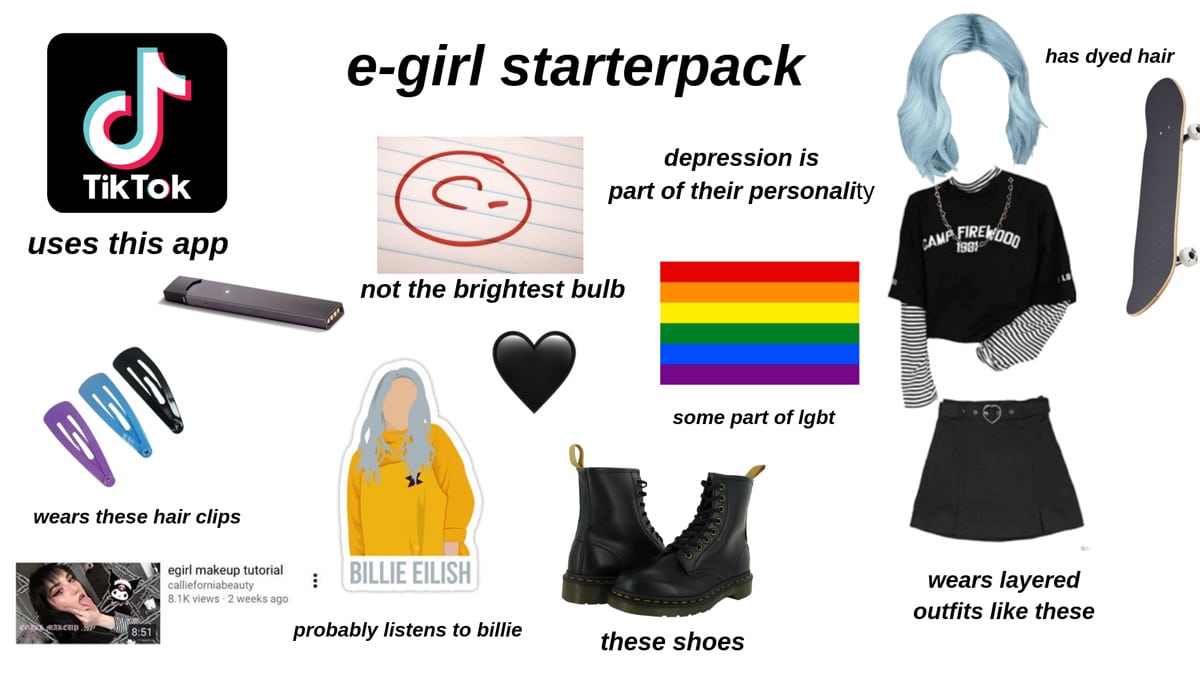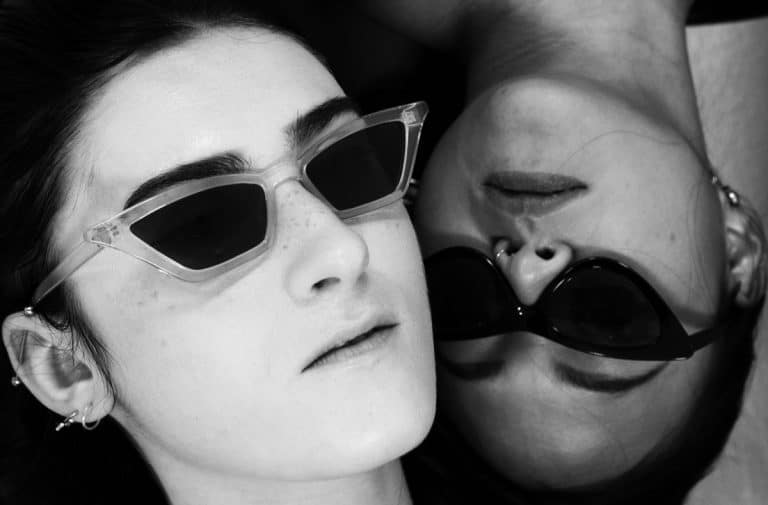Egirl: everything you need to know about the term and internet trend
What is an egirl?
Many of you must have heard the term egirl (sometimes also spelled e girl or e-girl) along with its male counterpart eboy. But what does it mean and where exactly does it come from? Here’s a simple definition and a bit more context for those of you wondering.
According to Urban Dictionary, an egirl is “a species of emo usually found on TikTok that commonly spends time on Tumblr. They can be found wearing pink eyeshadow with a large wing, little hearts under the eyes and a blushed nose and normally wearing some type of shirt from urban outfitters over a long sleeve striped shirt. Commonly found doing the Me! Me! Me! dance but has probably never seen it before.”
As precise as this definition might be, it can also confuse more than it illuminates on the term. In simple words, egirl is a term now used to describe a specific look that certain girls can have on platforms such as TikTok, VSCO or even online gaming platforms.
The most common and recent definition of egirl is used for the young girls on the app TikTok but there are also previous definitions for the word. Here, we’ll have a look at the three most common types of egirl.
The TikTok egirl
If you haven’t been on TikTok, the app that centres exclusively around enhanced micro-video content, things like egirl, VSCO girls, modern witches or TikTok ‘collab houses’ probably make no sense to you. But recently, TikTok became the number one app for gen Zers and even millennials.
Egirls gained popularity on the platform and are recognised as cute, fun and almost manga-like girls. The egirl films herself in her bedroom while she applies too much pink blush on her cheeks. Her hair is usually dyed in non-natural colours such as pink or blue (she might remind some people of the previously common emo girl).
E girls are TikTok girls who stand out from the crowd because of their unusual sense of fashion and makeup. From wearing too much blush and thick black eyeliner finishing with wings to drawing little hearts, crosses, or dots under their eyes, egirls usually look very childish in their short dresses with ruffles and bow in their hair. Many compare egirls to manga characters.

One of TikTok’s most famous egirls is Belle Delphine, who sold her used bathwater for $30 a pop to her online followers—the water sold out, by the way. She defined herself as a “weird elf kitty girl,” which is a good way of defining the TikTok egirl in general.
The emo egirl
View this post on Instagram
The emo egirl is a similar version to the TikTok egirl, only she tends to wear more black and striped t-shirts underneath another small t-shirt. She also wears chokers, dark makeup and hair styles. The emo egirl might be part of TikTok’s witch community.
The gamer egirl
The gamer egirl is simply the egirl version of the gamer girl, which is used to distinct female gamers from the traditional male gamer demographic, but not without controversy. Often called ‘fake gamer girls’ or ‘gamer gurls’, these women are accused of feigning interest in video games to attract male gamers.
Egirls can also be a mix of the TikTok egirl, the emo egirl and the gamer egirl.
The negative connotation of the term egirl
More recently, the term egirl has also been altered into something negative. It can often be used as an insult to describe attractive women on apps like TikTok or online game streaming platforms like Twitch. Some people use the term as another way of describing girls as ‘thot’ or ‘internet slut’.
Egirl meme

What's an eboy?
As stated above, eboys are the male counterpart of girls. On Urban Dictionary, the term eboy has for definition, “A boy that probably skates, has his nails painted with rings, wears beanies, maybe has a cute egirl girlfriend, always wearing vans and long sleeves or hoodies under tshirts, their hair is sometimes parted down the middle. They basically only exist on the internet unfortunately but we can still appreciate them on Instagram.”
According to some internet users, the term eboy comes from the shortened term ‘electronic boy’. Just like egirls, eboys are part of the youth subculture that emerged in the late 2010s and is almost exclusively seen on social media, notably popularised by TikTok. Their look is inspired by skater culture, 1990s to 2000s fashion, anime, K-pop, hip hop, and rave. Along the same lines are soft boys and VSCO girls.






